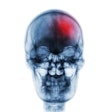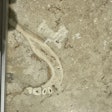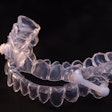
Despite the economic recession, U.S. dentists charged more for many common procedures at the beginning of 2009 than they charged two years before, an ADA survey found.
The ADA's 2009 Survey of Dental Fees, conducted from January to July of 2009 and published in December, found general dentists charging $77.64 on average for an adult prophylaxis (D1110), compared to $72.76 in the ADA's 2007 report, an increase of 6.7%.
An intraoral periapical first film radiograph (D0220) went up 8.1% from $21.65 to $23.41, while a composite resin one-surface anterior restoration (D2330) increased 9.5% from $119.93 to $131.30
The ADA report, based on questionnaires filled out by 2,097 dentists and adjusted to be representative by geography, gives an exhaustive list of what dentists said they charged for various procedures. The survey takers did not draw their own comparisons between its 2007 and 2009 reports, noting that some codes, descriptors and terminology had changed between the two. The statistical significance of the comparison between the two years was not calculated.
But if the periapical x-ray, anterior restoration, and prophylaxis are representative, the trend between the two reports suggests that dentists were able to raise their fees above the rate of general inflation. From July 2007 to July 2008, the Consumer Price Index registered an increase of 5.6%; but by the end of that period, the U.S. economy entered a deflationary period. Over the next 12 months, ending in July 2009 (when the ADA completed its 2009 survey), the Consumer Price Index actually dropped 2.1%.
In recent years, dentists have consistently raised their rates above inflation, resulting in a rise in their real net income at least from 2003 to 2007, according to separate ADA surveys (though another set of ADA surveys found many dentists reporting difficult recent quarters).
The 2009 fee survey found that two-thirds of U.S. dentists update their fees every year, and one in five updates every two years.
Fees ranged widely from one part of the country to another in the fee survey, with Pacific region dentists (California, Oregon, and Washington) charging the most and East South Central (Alabama, Mississippi, Kentucky, and Tennessee) dentists charging the least. For example, Pacific dentists charged $157.01 for an anterior restoration, while East South Central dentists placed it for only $109.70. Dentists in counties with higher population also charged more than those in sparsely populated counties.
In one multi-year trend the ADA survey did report, the association found that insurance companies are paying claims more quickly. In 2001, the average number of days to reimbursement for Delta Dental Plans was 28.2; by 2009 it had dropped to 20.5, with similar changes for Blue Cross/Blue Shield and commercial insurance carriers. Blue Cross/Blue Shield took five days longer in 2009 than Delta, but government programs took the longest: 35.5 days.



















